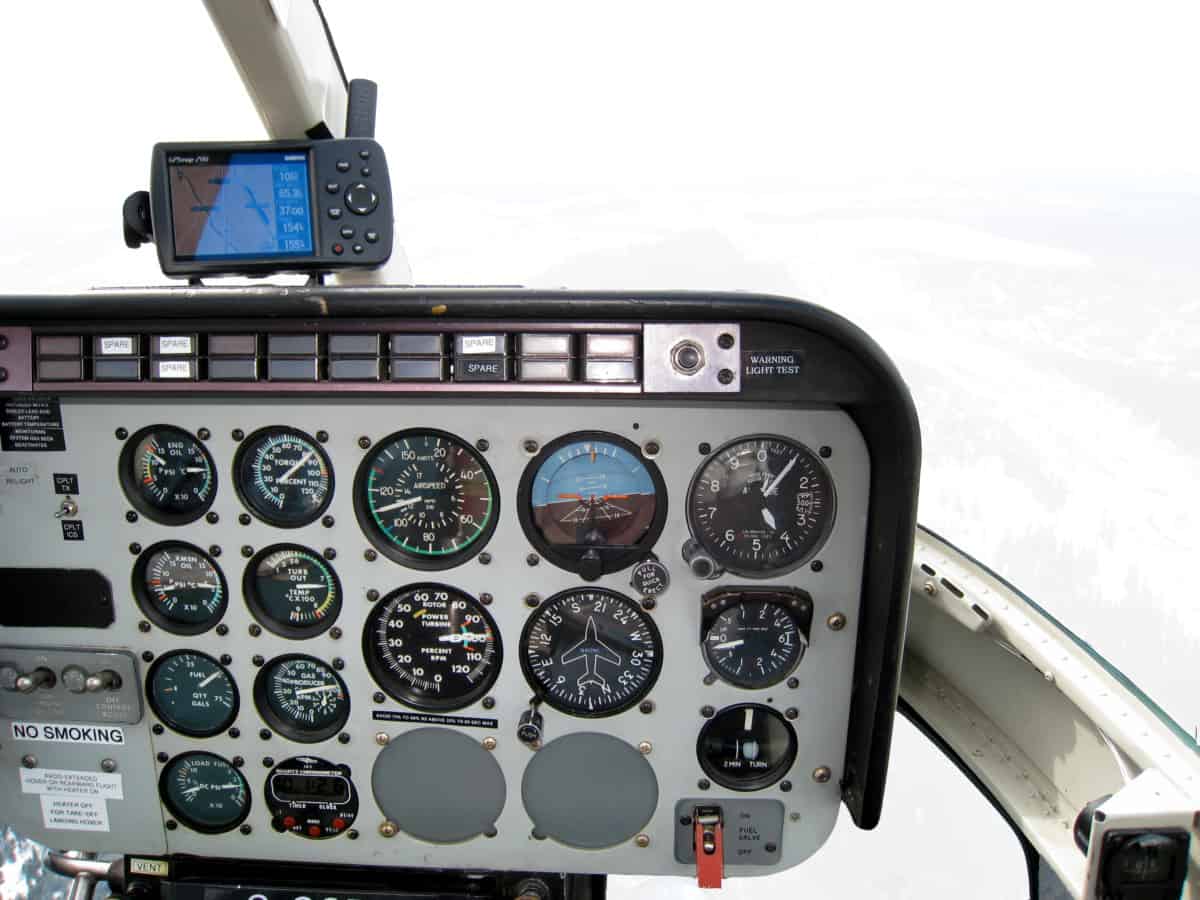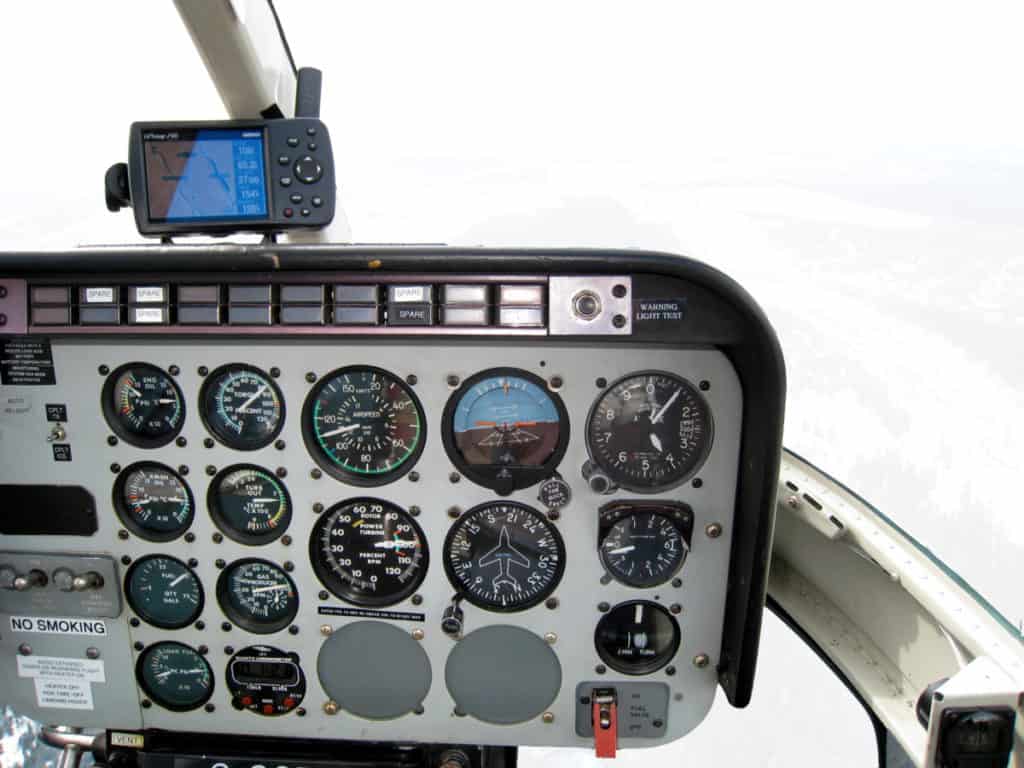
When flying around and the clouds begin to drop or the visibility starts to reduce this is the time that helicopter pilots need to start thinking about the options and alternate plans they should have previously looked at before the flight began. To be able to fly a helicopter into zero visibility conditions requires a certain kind of helicopter and a certain kind of helicopter pilot.
Most helicopters can fly in zero visibility, but it is the pilot that needs to be proficient. Flying without outside visual reference to the earth’s surface needs extensive training, proficiency, and the correct instruments in the aircraft for the pilot to maintain control of the helicopter.
Having flown helicopters in both conditions of unlimited visibility to zero visibility I can give you a first-hand explanation of how helicopters can fly in zero visibility and what it takes to do it safely.
How Can Helicopters Fly In Zero Visibility?
Technically ANY helicopter itself can be flown into zero visibility conditions but the person controlling it is the most unreliable link in the chain and because of this there need to be certain things in place to ensure the pilot, any occupants on board, and any person on the ground do not get hurt.
In most helicopter flights the pilot/s are flying under VFR – Visual Flight Rules. This means they need to look out of the helicopter’s windows and be able to see the ground and/or horizon to be able to establish which way is up.
For helicopters to fly safely in zero visibility conditions the pilots need to fly under IFR – Instrument Flight Rules. This means the pilot controls the helicopter by sole reference to the aircraft’s instrumentation in the cockpit and is usually under the control of air traffic controllers in an airspace system designed to keep obstacles away from the aircraft. If they are flying out in remote locations, then the pilot is often on their own!
Helicopter pilots get into trouble when they are flying in VFR conditions, they are not IFR trained, and then they get into poor visibility, the cloud ceiling begins to drop, or rising terrain forces the pilot higher and into the cloud. This is known as entry into IIMC – Inadvertent Instrument Meteorological Conditions.
In other words, the weather conditions prevent the pilot from being able to see outside references on the ground and require flight using the helicopter’s cockpit instruments. Depending on the pilot and the location of the aircraft when it enters this IIMC can be the difference of survival or not.
Once airborne and flying in zero visibility conditions is one thing but pilots still need to be able to see the ground to land and take off so when a full zero visibility condition exists it should prevent that flight from taking place. At this time we are as close as is safely possible to zero visibility helicopter operations with the current aircraft technology available.

Join My Newsletter & Get Great Tips, Information and Experiences To Help You Become a Superb Pilot!
Helicopters in the offshore oil transportation sector regularly take off in as little as 1/4sm visibility and land at 1/2sm visibility. Having the right helicopter, appropriately trained pilots, and well-designed procedures & policies are what make this operation safe. Without the equipment, training, or procedures then things turn out very different!
Helicopter Equipment Required To Fly In Zero Visibility
Helicopters need to be equipped with a bare minimum of cockpit instruments for the pilot to safely reference when controlling the helicopter in zero-vis conditions. An ‘Instrument Stack’ or ‘6 Pack’ provides the pilot with the bare minimum information to be able to keep the helicopter upright.
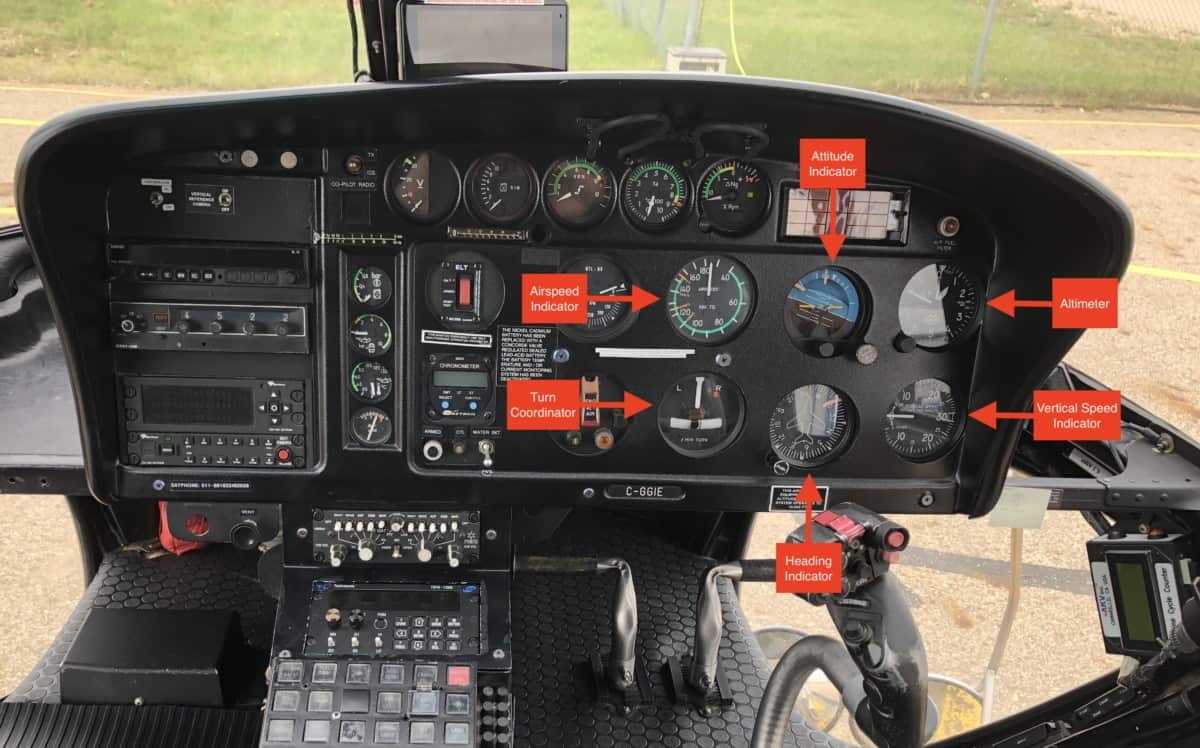
This 6 pack consists of:
- Attitude Indicator
- Altimeter
- Airspeed Indicator
- Vertical Speed Indicator
- Turn Coordinator
- Compass or Heading Indicator
Having a 6-Pack is just the starting point and if this is all the pilot had on the helicopter then they will be sweating and working hard if they accidentally ended up in poor visibility! I remember doing my initial instrument training on a Robinson R22 simulator and this is all it had. Trying to fly a twitchy, sensitive helicopter by sole reference to the instruments while trying to tune radio frequencies, look at charts and procedures, and program the GPS would have the helicopter climbing, turning, and banking in seconds! – Not fun!
To be able to safely fly in zero visibility for prolonged periods the pilot needs a little help – This is where automation comes in. The more the helicopter can do for the pilot, the safer it becomes.
The first piece of equipment that is a godsend is a moving map GPS – This helps the pilot maintain awareness of where they are in the world, known as Situational Awareness. Not being able to see outside really confuses a pilot’s ability to know where they are. A good quality moving map displayed in the cockpit is very helpful!
The next piece of equipment is an AFCS – Automatic Flight Control System. Commonly known outside of aviation as an Autopilot, however, that is just one part of the AFCS system. By having the helicopter take over the physical manipulation of the flight controls allows the pilot to tell the helicopter where to go, how fast, and how high.
The helicopter then gets on and does it leaving the pilot to complete other necessary tasks like navigating, talking with air traffic control, and preparing for the next part of the flight – From experience, this is THE most important part to safely flying a helicopter in zero visibility.
For more information on helicopter autopilot systems see the ‘Further Reading’ Section at the end of this article
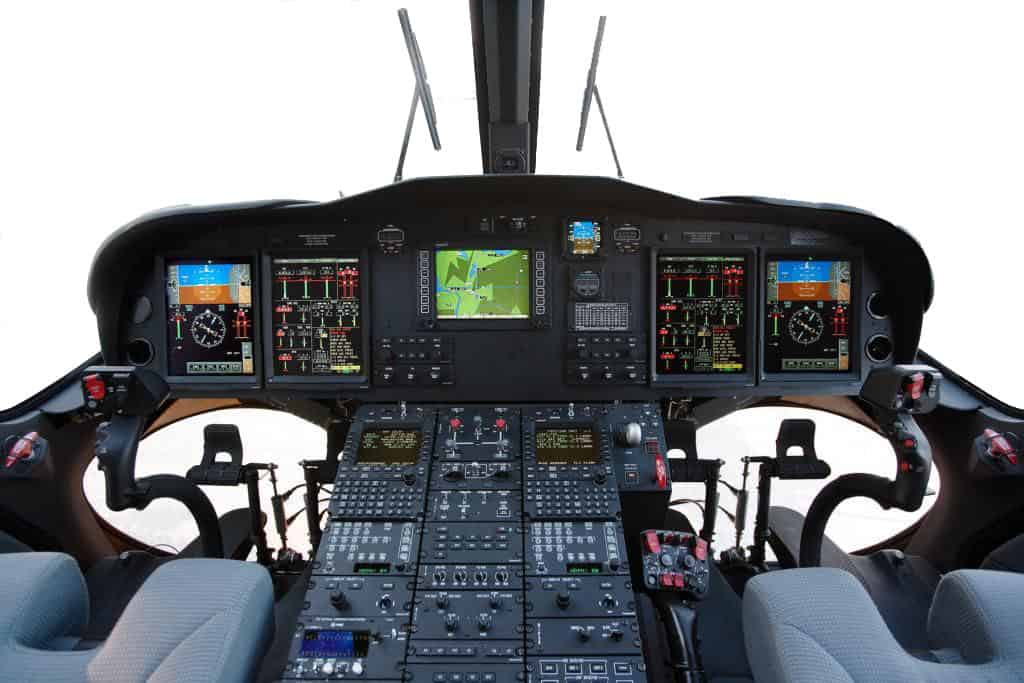
The other option is to have a second pilot with you who is doing the physical control manipulation allowing you to focus on all the ‘Other Stuff’. Other additions like a second engine, redundant helicopter systems, and advanced avionics all make flying in zero visibility safer, but are not the bare minimum required to maintain control.
Having a helicopter with the necessary instrumentation and equipment onboard is great, but only if it is working correctly, calibrated, and displaying true. Many of the ‘Bush Rocket’ helicopters that I fly have some or all of the 6-pack but they are not required to be tested and working because my company is a VFR-Only operation.
Having instrumentation that does not display properly is a surefire way to not come out of a reduced or zero visibility condition if one was accidentally entered. Because of this, it is up to the pilot to make sure they turn around or land WAAAY before they get into this situation! This leads us to the next part of safely flying in zero vis:
Helicopter Pilot Training Required To Fly In Zero Visibility
Learning to fly a helicopter is hard and takes months of practice, now take away a pilot’s most powerful sense – sight, and you have a problem. To be able to safely fly a helicopter by sole reference to its instrumentation in zero visibility conditions you need additional and specialized training known as Instrument Training.
Instrument training is designed to train a pilot to correctly scan and interpret the cockpit instrumentation and manipulate the flight controls to maintain safe flight. It might sound easy but as humans, we are used to our balance and ‘seat of the pants’ feelings backing up our sight to tell us how our body is orientated to the ground.
In a hard turn in a car, we feel the centrifugal force pulling us to the outside of the turn, when you have your eyes closed and someone nudges you the body reacts to maintain balance and keep you upright. During instrument training you have to train your brain to ignore these bodily senses and rely just on what the instrumentation is telling you – This is hard, Trust Me!
For non-proficient instrument pilots, not being able to ignore these senses makes them question the information displayed in the cockpit, and will begin to fly according to what their body is telling them, which can be wrong. This is how a pilot who enters a zero visibility condition with no instrument training generally lasts only 20 seconds without outside visual reference before they have allowed the aircraft to enter a dangerous flight attitude, usually resulting in a fatal crash.
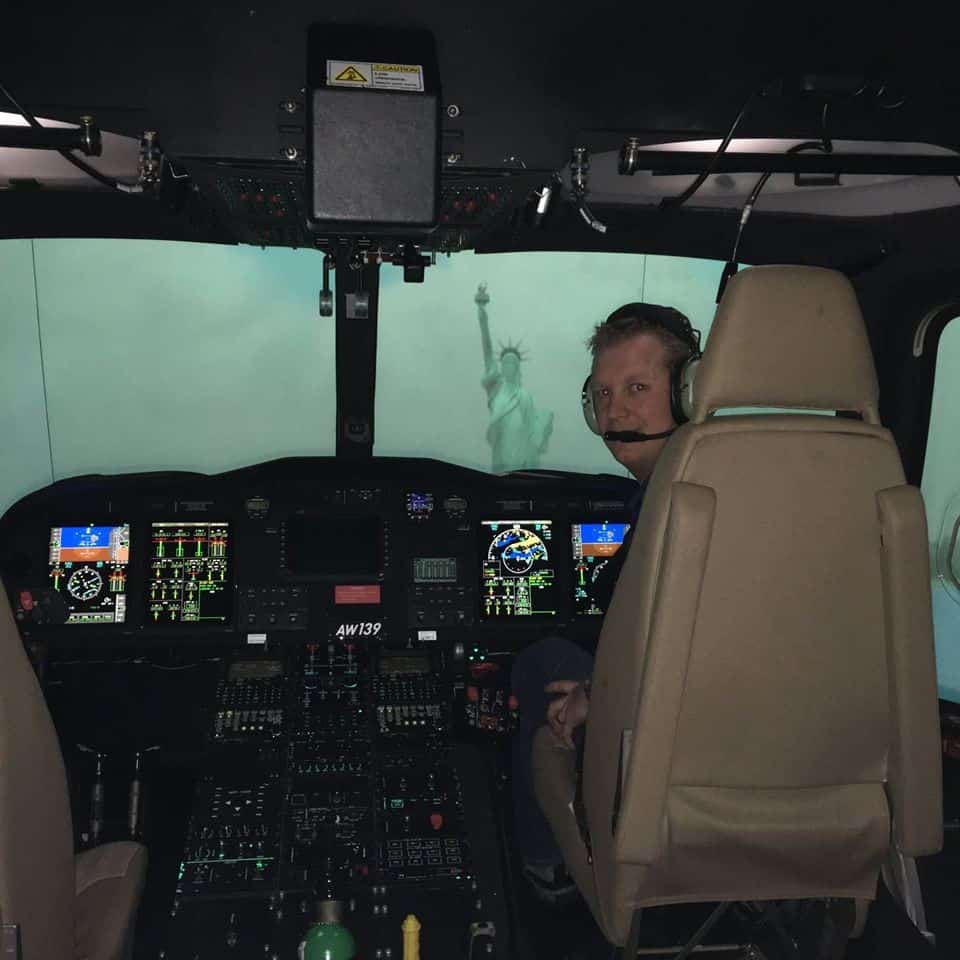
The other area that gets helicopter pilots into trouble is when they think they can fly on instruments but have not done so in a long time. As part of getting a helicopter pilot certificate, each pilot gets some basic instrument training either in a helicopter simulator or by flying in an aircraft using a view-limiting device.
If that pilot has not practiced flying by sole reference to instruments for a very long time and then finds themself ‘Pushing the Weather’ they can find themselves in a situation where they accidentally get into low vis conditions.
A very common scenario is a pilot ‘scud-running’ a valley to get back home and they look down to adjust the radio or GPS and while doing so they allow the aircraft to climb. When they look back up they are in the cloud and panic sets in. Without some composure, clear thinking, and instrument flying proficiency that helicopter is about to enter a very dangerous and possibly fatal chain of events.
To Finish
Helicopters are able to fly in zero visibility provided the pilot has the necessary training and proficiency to maintain control of the helicopter by using its instrumentation. When flying in an area where no obstacles or terrain present a problem then a helicopter can easily fly in zero visibility, only needing around 1/2sm to be able to legally land.
When an untrained or non-proficient pilot accidentally gets into zero visibility conditions the chances of making it out of the situation safely are dramatically low. The key to preventing this is to turn around or land way before the visibility becomes an issue.
The client pressure to continue, take-off, or ‘Get-Home-Itus’ still causes many accidents because pilots have pushed too far into weather conditions that impede safe flight. If the weather is bad there are a few options:
- Don’t go
- Land if encountered
- Get an IFR-certified aircraft and crew
By using the right tools for the job flying in zero visibility is not a problem. However, wrong place at the wrong time with the wrong tools, and the outcome doesn’t look too good!
Further Reading
If you found this article helpful may I suggest a few more for you to read:

